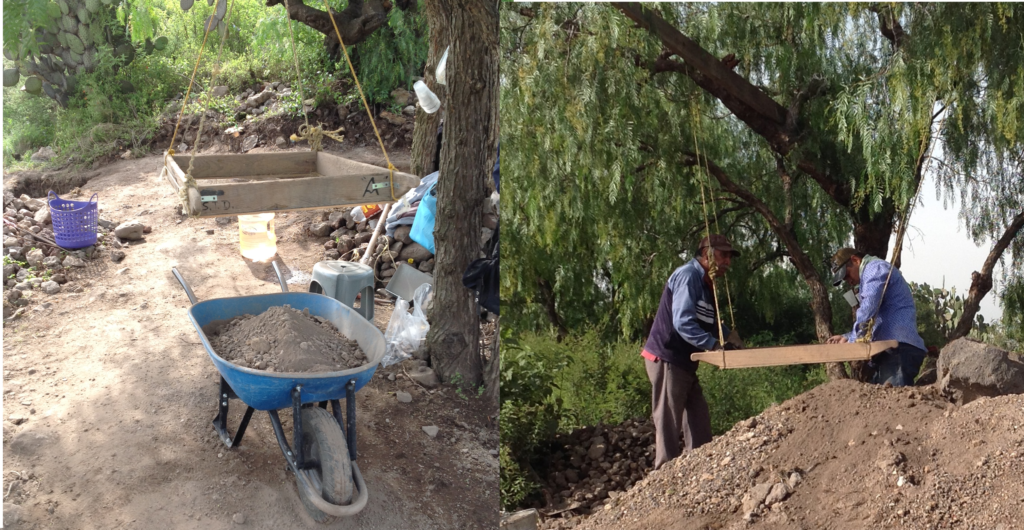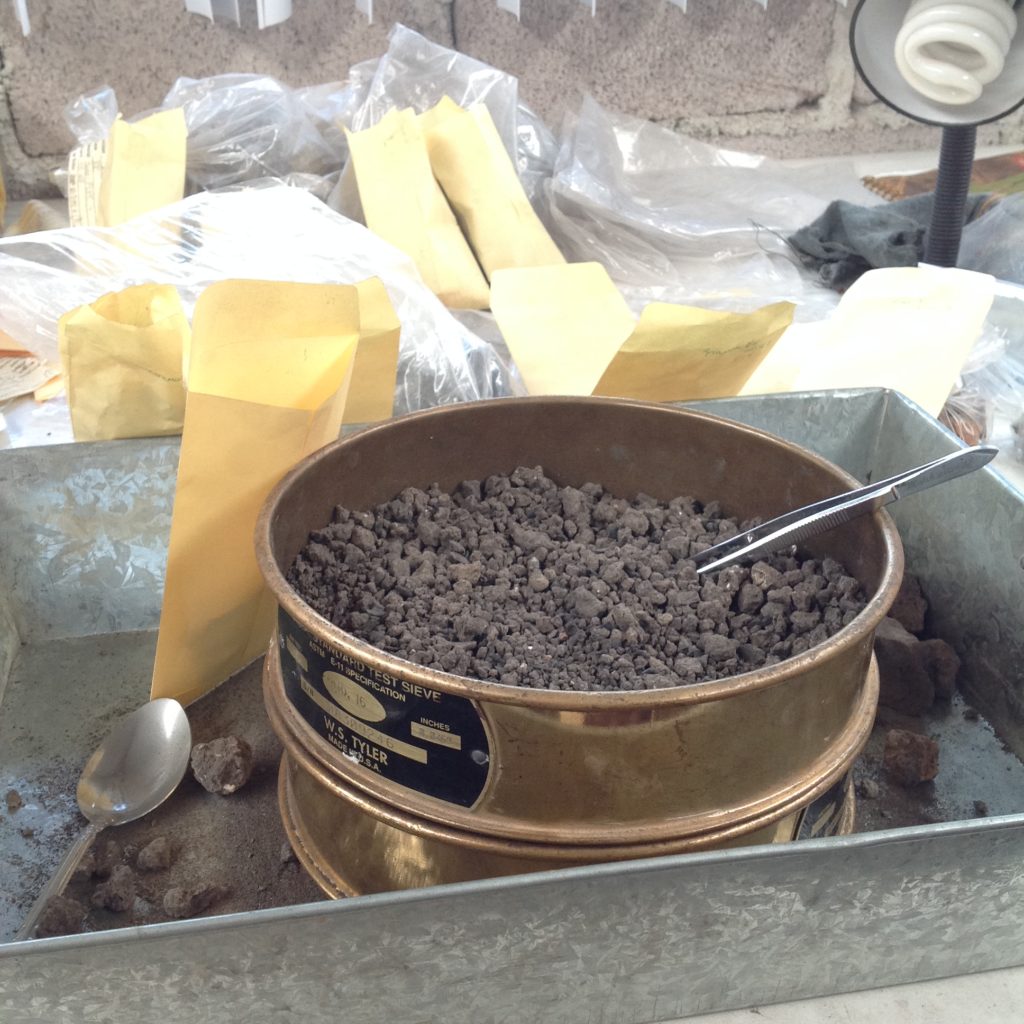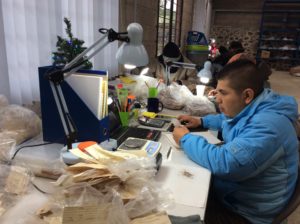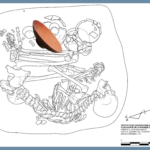Recovery of materials
Screening, collecting, and recording of materials
Excavation requires the extraction of large amounts of sediment, which is then screened through a metal mesh. Artifacts and large ecofacts are recovered using this technique. The following image shows a worker coarse screening sediment recovered from a test pit:

We also carry out fine screening on soil samples to recover small artifacts or ecofacts, which might not be apparent at first glance. The picture below shows this process:


Artifacts and ecofacts recovered from the screen are classified according to material type (e.g., ceramic, lithic, bone, mica, charcoal, and shell). These objects are then stored in containers (paper bags, plastic bags, plastic containers, etc.) based on material properties and state of preservation. Each bag label includes a unique alphanumeric number, alongside information concerning its provenience. The image to the right shows an example of the tags used in this project.

All bags of each material type are recorded in the project’s database with all its associated information, including collection date, origin, and depth.
Click on the following links to learn about the contexts and general classification of archaeological materials we find:


Why is it important to record the materials?
As mentioned in other sections, archaeology is a discipline that permanently alters the study site, so it is important to record as much information as possible throughout the process – before, during, and after excavation. In addition to registering the materials into a database, photographs and drawings are taken of the original context because sometimes the materials are very poorly preserved and when removed, can become pulverized or break into pieces. These images are thus valuable for the specialist who will be analyzing the materials once transferred to the lab for conservation and analysis. A good example is mural fragments. Once removed from the ground, murals gradually lose their moisture acquired during burial. If this moisture is extracted too rapidly by setting them out under the sun, for example, the fragments may fracture or crumble. Therefore, photographs become very useful when trying to reconstruct the images depicted in these murals.
Sampling
Structures and features are sampled in order to run chemical analyses. For example, soil samples are recovered as flotation samples, where soil is dumped into water and fine sieved to retrieve botanical samples that float to the surface (known as light fraction), and other small materials (tiny bones, micro-debitage, etc.) otherwise missed during the standard screen process (heavy fraction).
Large ecofacts and flotation samples alike can be sampled and tested through various specialized methods; even small fragments recovered from ancient floors can be taken to conduct soil chemistry analysis. To read more, visit the section Analyses.